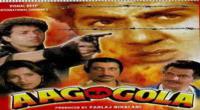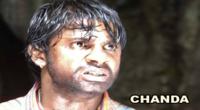| Howrah Bridge | |
|---|---|
 The Howrah Bridge | |
| Coordinates | 22°35?06?N 88°20?49?E? / ?22.5851°N 88.3469°ECoordinates: 22°35?06?N 88°20?49?E? / ?22.5851°N 88.3469°E |
| Carries | 4 lanes of Strand Road, pedestrians and bicycles |
| Crosses | Hooghly River |
| Locale | Howrah and Kolkata |
| Official name | Rabindra Setu |
| Maintained by | Kolkata Port Trust |
| Characteristics | |
| Design | Suspension type Balanced Cantilever and truss arch |
| Material | Steel |
| Total length | 705 m (2,313.0 ft) |
| Width | 71 ft (21.6 m) with two footpaths of 15 ft (4.6 m) on either side |
| Height | 82 m (269.0 ft) |
| Longest span | 1,500 ft (457.2 m) |
| Clearance above | 5.8 m (19.0 ft) |
| Clearance below | 8.8 m (28.9 ft) |
| History | |
| Designer | Rendel, Palmer and Tritton |
| Constructed by | Braithwaite, Burn & Jessop Construction |
| Construction start | 1936 |
| Construction end | 1942 |
| Opened | 3 Feb 1943 |
| Statistics | |
| Daily traffic | 100,000 vehicles and 150,000 pedestrians |
| Toll | Free both ways |
 Howrah Bridge Location in West Bengal | |
Howrah Bridge is a bridge with a suspended span over the Hooghly River in West Bengal, India. Commissioned in 1943, the bridge was originally named the New Howrah Bridge, because it replaced a pontoon bridge at the same location linking the two cities of Howrah and Kolkata (Calcutta). On 14 June 1965 it was renamed Rabindra Setu after the great Bengali poet Rabindranath Tagore, who was the first Indian and Asian Nobel laureate. It is still popularly known as the Howrah Bridge.
The bridge is one of four on the Hooghly River and is a famous symbol of Kolkata and West Bengal. The other bridges are the Vidyasagar Setu (popularly called the Second Hooghly Bridge), the Vivekananda Setu, and the newly built Nivedita Setu. It weathers the storms of the Bay of Bengal region, carrying a daily traffic of approximately 100,000 vehicles and possibly more than 150,000 pedestrians, easily making it the busiest cantilever bridge in the world. The third-longest cantilever bridge at the time of its construction, the Howrah Bridge is currently the sixth-longest bridge of its type in the world.
Contents
History
1862 proposal by Turnbull
In 1862, the Government of Bengal asked George Turnbull, chief engineer of the East Indian Railway Company to study the feasibility of bridging the Hooghly River. He had recently established the company's rail terminus in Howrah. He reported on 19 March, with large-scale drawings and estimates, that:
The bridge was not built.
Pontoon bridge
In view of the increasing traffic across the Hooghly river, a committee was appointed in 1855-56 to review alternatives for constructing a bridge across it. The plan was shelved in 1859-60, to be revived in 1868, when it was decided that a bridge should be constructed and a newly appointed trust vested to manage it. The Calcutta Port Trust was founded in 1870, and the Legislative department of the then Government of Bengal passed the Howrah Bridge Act in the year 1871 under the Bengal Act IX of 1871, empowering the Lieutenant-Governor to have the bridge constructed with Government capital under the aegis of the Port Commissioners.
Eventually a contract was signed with Sir Bradford Leslie to construct a pontoon bridge. Different parts were constructed in England and shipped to Calcutta, where they were assembled. The assembling period was fraught with problems. The bridge was considerably damaged by the great cyclone on 20 March 1874. A steamer named Egeria broke from her moorings and collided head-on with the bridge, sinking three pontoons and damaging nearly 200 feet of the bridge. The bridge was completed in 1874, at a total cost of ?2.2 million, and opened to traffic on 17 October of that year. The bridge was then 1528 ft. long and 62 ft. wide, with 7-foot wide pavements on either side. Initially the bridge was periodically unfastened to allow steamers and other marine vehicles to pass through. Before 1906, the bridge used to be undone for the passage of vessels during daytime only. Since June of that year it started opening at night for all vessels except ocean steamers, which were required to pass through during daytime. From 19 August 1879, the bridge was illuminated by electric lamp-posts, powered by the dynamo at the Mullick Ghat Pumping Station. As the bridge could not handle the rapidly increasing load, the Port Commissioners started planning in 1905 for a new improved bridge.
Plans for a new bridge
In 1906 the Port Commission appointed a committee headed by R.S. Highet, Chief Engineer, East Indian Railway and W.B. MacCabe, Chief Engineer, Calcutta Corporation. They submitted a report stating that
Bullock carts formed the eight - thirteenths of the vehicular traffic (as observed on 27 August 1906, the heaviest day's traffic observed in the port of Commissioners 16 days' Census of the vehicular traffic across the existing bridge). The roadway on the existing bridge is 48 feet wide except at the shore spans where it is only 43 feet in roadways, each 21 feet 6 inches wide. The roadway on the new bridge would be wide enough to take at least two lines of vehicular traffic and one line of trams in each direction and two roadways each 30 feet wide, giving a total width of 60 feet of road way which are quite sufficient for this purpose
The traffic across the existing floating bridge Calcutta & Howrah is very heavy and it is obvious if the new bridge is to be on the same site as the existing bridge, then unless a temporary bridge is provided, there will be serious interruptions to the traffic while existing bridge is being moved to one side to allow the new bridge to be erected on the same site as the present bridge.
The committee considered six options:
- Large ferry steamers capable of carrying vehicular load (set up cost ?900,000, annual cost ?437,000)
- A transporters bridge (set up cost ?2 million)
- A tunnel (set up cost ?338.2 million, annual maintenance cost ?1779,000)
- A bridge on piers (set up cost ?22.5 million)
- A floating bridge (set up cost ?2140,000, annual maintenance cost ?200,000)
- An arched bridge
The committee eventually decided on a floating bridge. It extended tenders to 23 firms for its design and construction. Prize money of £ 3,000 (?45,000, at the then exchange rate) was declared for the firm whose design would be accepted.
Planning and estimation
The initial construction process of the bridge was stalled due to the World War I, although the bridge was partially renewed in 1917 and 1927. In 1921 a committee of engineers named the 'Mukherjee Committee' was formed, headed by R. N. Mukherji, Sir Clement Hindley, Chairman of Calcutta Port Trust and J. McGlashan, Chief Engineer. They referred the matter to Sir Basil Mott, who proposed a single span arch bridge. Charles Alfred O"Grady one of the Engineers
In 1922 the New Howrah Bridge Commission was set up, to which the Mukherjee Committee submitted its report. In 1926 the New Howrah Bridge Act passed. In 1930 the Goode Committee was formed, comprising S.W. Goode as President, S.N. Mallick, and W.H. Thompson, to investigate and report on the advisability of constructing a pier bridge between Calcutta and Howrah. Based on their recommendation, M/s. Rendel, Palmer and Tritton were asked to consider the construction of a suspension bridge of a particular design prepared by their chief draftsman Mr. Walton. On basis of the report, a global tender was floated. The lowest bid came from a German company, but due to increasing political tensions between Germany and Great Britain in 1935, it was not given the contract. The Braithwaite, Burn & Jessop Construction Co. was awarded the construction contract that year. The New Howrah Bridge Act was amended in 1935 to reflect this, and construction of the bridge started the next year.
Construction
The bridge does not have nuts and bolts,[10][17] but was formed by riveting the whole structure. It consumed 26,500 tons of steel, out of which 23,000 tons of high-tensile alloy steel, known as Tiscrom, were supplied by Tata Steel.[7][18] The main tower was constructed with single monolith caissons of dimensions 55.31 x 24.8 m[4][19] with 21 shafts, each 6.25 metre square.
Request Movie Now
Watch movie Howrah Bridge online on Amazon
Watch movie Howrah Bridge online
Watch The Movie On Prime
Appu Full HD Movie Download

Meri Biwi Ka Jawab Nahin Full HD Movie Download

Meera Ka Girdhar Full HD Movie Download

Dr Vidya Full HD Movie Download

Prem Aggan Full HD Movie Download

Atishbaaz Full HD Movie Download

Shaadi Ke Baad Full HD Movie Download

Kaaboo Full HD Movie Download

Aakhri Dao (1975) Full HD Movie Download
.jpg)
Aag Ka Gola Full HD Movie Download

Chanda Full HD Movie Download

Kali Dada Full HD Movie Download

Bondhu (Bengali) Full HD Movie Download
.jpg)
Pelli Pusthakam Full HD Movie Download

Kodanda Ramudu (2000) Full HD Movie Download
.jpg)
Muduru Full HD Movie Download

My Boss Bajranbali Full HD Movie Download

Shahid Bhagat Singh Full HD Movie Download

Dongodu Full HD Movie Download

Alumogalu Full HD Movie Download

Bhoot Bungla Full HD Movie Download


Download latest Movie from bollywood
Request for Download movie Howrah Bridge
- Bollywood movies
- Latest Bollywood movies
- Download all bengali movies
- Download all bhojpuri movies
- Download all english movies
- Download all gujarati movies
- Download all hindi movies
- Download all kannada movies
- Download all malayalam movies
- Download all marathi movies
- Download all oriya movies
- Download all punjabi movies
- Download all tamil movies
- Download all telugu movies
- Bollywood action movies
- Bollywood adventure movies
- Bollywood animation movies
- Bollywood classical movies
- Bollywood comedy movies
- Bollywood crime movies
- Bollywood devotional movies
- Bollywood documentary movies
- Bollywood drama movies
- Bollywood family movies
- Bollywood fantasy movies
- Bollywood historical movies
- Bollywood history movies
- Bollywood horror movies
- Bollywood musical movies
- Bollywood mystery movies
- Bollywood mythological movies
- Bollywood patriotic movies
- Bollywood romance movies
- Bollywood romantic movies
- Bollywood sci-fi movies
- Bollywood social movies
- Bollywood spiritual movies
- Bollywood sports movies
- Bollywood suspense movies
- Bollywood thriller movies
- Bollywood war movies
- Hot actress list
- Hot gujarati actress list
- Hot tamil actress list
- Hot bhojpuri actress list
- Hot assam actress list
- Hot bihari actress list
- Hot jammu and kashmir actress list
- Hot gujarati actress list
- Hot haryana actress list
- Hot konkani actress list
- Hot marathi actress list
- Hot odia actress list
- Hot punjabi actress list
- Hot rajasthani actress list
- Hot kannada actress list
- Hot malayalam actress list
- Hot telugu actress list
- Hot tulu actress list
- Hot Actress list from Indian city
- Hot actress list from ahmedabad
- Hot actress list from alappuzha
- Hot actress list from bangalore
- Hot actress list from bangalore
- Hot actress list from bhopal
- Hot actress list from chandigarh
- Hot actress list from chennai
- Hot actress list from guwahati
- Hot actress list from hyderabad, india
- Hot actress list from indore
- Hot actress list from jaipur
- Hot actress list from kannur
- Hot actress list from kochi
- Hot actress list from kolkata
- Hot actress list from kollam
- Hot actress list from kottayam
- Hot actress list from kozhikode
- Hot actress list from lucknow
- Hot actress list from madurai
- Hot actress list from mangalore
- Hot actress list from mumbai
- Hot actress list from mysore
- Hot actress list from new delhi
- Hot actress list from patna
- Hot actress list from pune
- Hot actress list from thiruvananthapuram
- Hot actress list from thrissur
- Hot actress list from tiruchirappalli
- Hot actress list from vijayawada
- Hot actress list from visakhapatnam
- All Bollywood Movies
- Bollywood Celeb
- >Art Director
- >Audiography
- >Background Music
- >Banner
- >Choreographer
- >Cinematographer
- >Costume Designer
- >Dialogue Writer
- >Director
- >Distributor
- >Editor
- >Executive Producer
- >Hair Stylist
- >Lyricist
- >Music Director
- >Photographer
- >Playback Singers
- >Presenter
- >Producer
- >Production Company
- >Production Designer
- >Screenplay
- >Singer
- >Sound
- >Actor
- >Story Writer
- >Studio
- >Video Director
- >Miscellaneous
- >Publicity (pro)
- >Web Creator
- >Production Labs
- >Publicity Design
- >Publicity Stills
- >Writer
- >Miscellaneous Artists
- >Visual Effects
- >Reporter
- >Music Company
- >Shooting Studios
- >Picturised On
- >Line Producer
- >Co Producer
- >Asst Director
- >Casting Director
- >Cinematography
- >Choreography
- >Dialouge
- >Editing
- >Lyrics
- >Music
- >Story
- >Playback Singer Female
- >Playback Singer Male
- >Actor In A Comic Role (male/female)
- >Child Artiste
- >Ensemble Cast
- >Actor Popular Choice (male)
- >Actor Popular Choice (female)
- >Sa Re Ga Ma Pa Song Of The Year
- >Actor In Supporting Role
- >Actress In Supporting Role
- >Actor In Leading Role
- >Art Direction
- >Actress In Leading Role
- >Sound Recording
- >Costume Design
- >Special Effects
- >Action
- >Actor In A Negative Role
- >Lifetime Achievement Award
- >Cinematic Exellence (director)
- >Cinematic Exellence (male)
- >Cinematic Exellence (female)
- >International Male Icon
- >International Female Icon
- >Actor In A Supporting Role (male)
- >Actor In A Supporting Role (female)
- >Actor In A Comic Role
- >Playback Singer (male)
- >Playback Singer (female)
- >Most Promising Debut (female)
- >Most Promising Debut (male)
- >Most Promising Director
- >Sound Design
- >Lifetime Jodi
- >Marketed Film
- >Jury Award For Best Actor
- >Jury Award For Best Actress
- >Jury Award For Best Film
- >Jury Award For Best Director
- >Playback Singer(male)
- >Lifetime Acheivement Award (male)
- >Excellence Award
- >Jodi Award
- >Performer Of The Year
- >Presented By